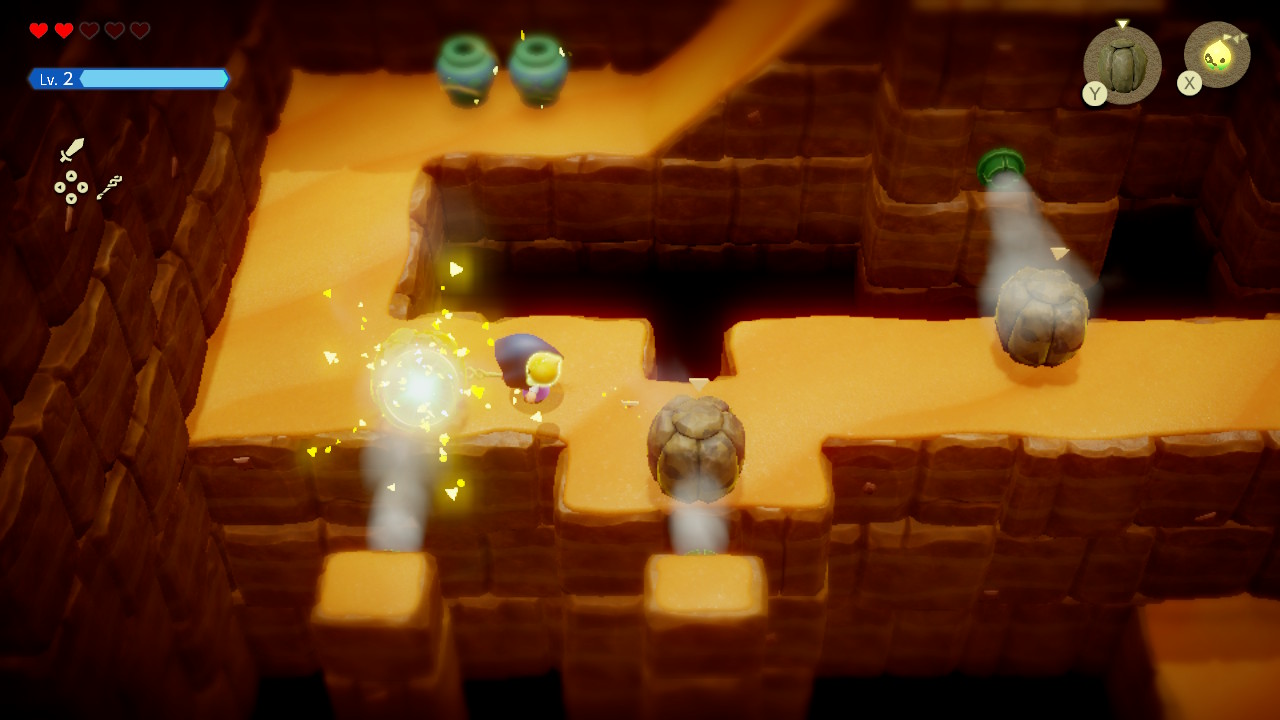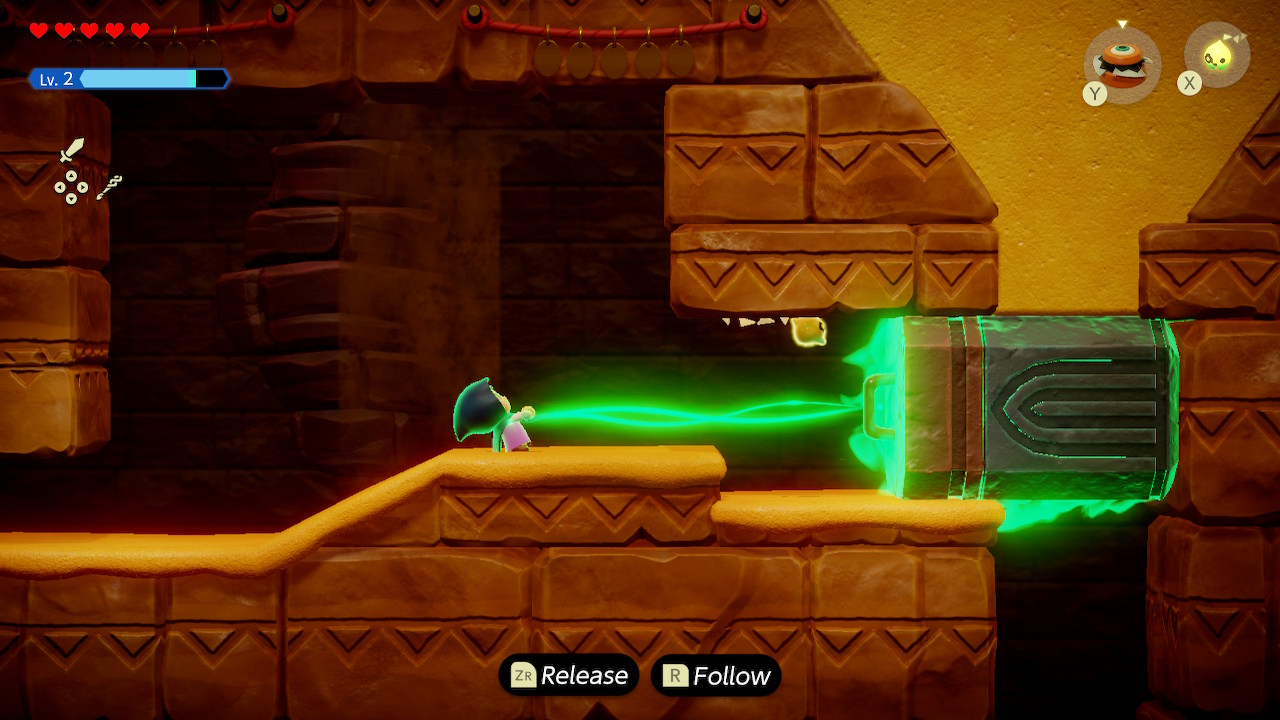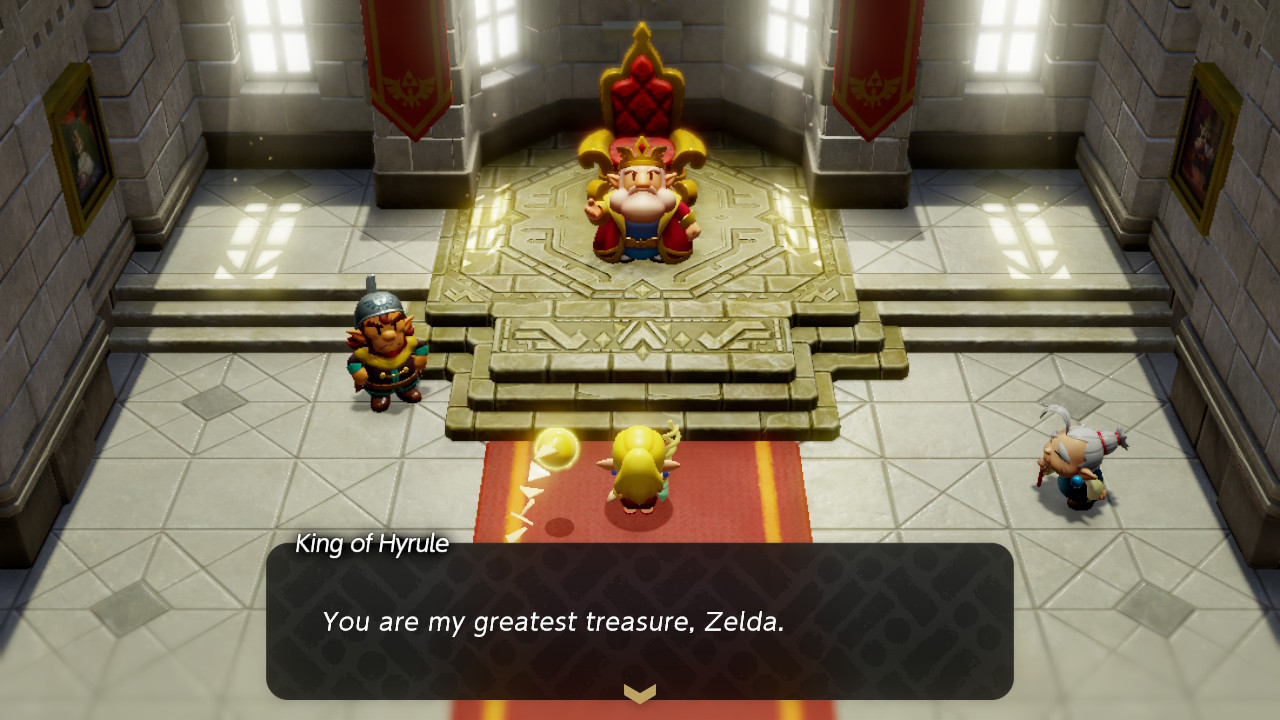Disclaimer: Writer is an investor in Nintendo.

After almost 11 years without a new traditional, top-down The Legend of Zelda (TLOZ) game, Nintendo fans were getting antsy. Many were worried about the future of the series, unsure if it died along with the 3DS. After all, the last home console to feature traditional Zelda experiences was the Super Nintendo, since after that they were reserved for handhelds. While we did get a remake of Link’s Awakening on the Switch in 2019, it wasn’t clear that more was coming. Little did we know, Nintendo was working on something all this time and just needed a moment to cook.
The Legend of Zelda: Echoes of Wisdom is a completely original, top-down game in the series that swaps out the usual protagonist, Link, with the one and only Princess Zelda. It’s taken much inspiration from Breath of The Wild and Tears of The Kingdom, and thus grants the player a higher degree of freedom.
Plot
The game begins with princess Zelda trapped in a crystal as Link attempts to rescue her. Upon defeating the monster holding her captive, rifts spread across the floor and quickly consume Link – but not before he frees the princess with a last-second arrow shot.

Now freed, Zelda heads back to Hyrule Castle only to watch as the most prominent leaders of Hyrule Kingdom are also swallowed by the rifts. Now alone, all hope seems lost until the mysterious creature “Tri” makes an appearance, giving Zelda a special rod that will assist her in stopping the rifts spreading across Hyrule. The two set out to close the rifts plaguing the land, making use of Tri’s powers and Zelda’s wisdom to overcome the obstacles in their way.
I loved this opening – it starts the game out with a bang, gives us mysteries to think about, and quickly introduces you to the gameplay. There was however a bit more dialogue than I’d hoped. And while I won’t spoil what happens later in the story, know that things stay interesting with a few twists and some new lore drops that properly fit in the Zelda canon.
Gameplay
The main gimmick of this game is Zelda’s ability to create a limited number of “echoes” with the Tri Rod. These are exact copies of enemies and objects you encounter throughout the game, and there are 127 in total. For example, once you learn the bed echo, you can summon several beds on top of each other to reach higher places. If you encounter enemies out on the field, you might want to try using echoes of other baddies you’ve already defeated, and they’ll automatically fight for you. It’s a ton of fun to find the many ways you can use every echo you’ve obtained to overcome various puzzles the game throws at you.

It also fits the character of Zelda very well, using her thoughtful thinking to overcome challenges rather than brawn. It’s long been established in this series that she embodies wisdom while Link and Ganon embody courage and power respectively. Instead of following the Hollywood trope of swapping out a male for a female in a traditionally masculine role (e.g. the latest Indiana Jones and Star Wars movies) the developers intentionally waited until they found a gameplay concept that would fit Zelda before they let her take the leading role. I see this as a sign of respect for her femininity, as this kind of gameplay fits with female strengths well. It’s also a wise decision to not try and turn her into something she isn’t.
There are, unfortunately, some clear downsides to this style of play. Much like Tears of The Kingdom, a few certain echoes allow you to overcome a large amount of the challenges in the game with little thought. For example, the cloud and water block echoes are the best for horizontal and vertical movement respectively, so you rarely find yourself using the dozens of other echoes whose primary uses are for traversal. There are certainly a good number of times when you find yourself using a very specific echo for an interesting purpose, but it’s not as frequent as I think it should be. It can also be a bit of a hassle to find specific echoes you want as you build up the list.
Fortunately, there are other abilities that I feel are more consistent. Early on in the game you gain the Swordfighter form, which grants you Link’s powers (sword and shield) for a limited amount of time before needing to recharge. I appreciated this inclusion of traditional gameplay, as sometimes it’s just easier to wack enemies yourself rather than wait for echoes to take them out. And the limited use means you are still encouraged to use echoes often.
Additionally, Zelda acquires the bind ability from Tri, which allows you to either follow another object’s movement or have it follow yours. The puzzles that use these were probably my favorite in the entire game.

Graphics
The visuals are definitely where this game struggles the most. Now, I don’t have any problem with the art style, and don’t mind that some assets are reused from Link’s Awakening. The issue is that this game chugs, and it does so inconsistently. Some areas run at a perfect 60 fps while others slow down dramatically before going back up and dropping again. Certainly not what I’d expect from a mainline Legend of Zelda game, but it didn’t ruin the experience for me.
Faith Perspective
As previously mentioned, I think this game takes care to respect Zelda’s femininity, and I really appreciate that. However, at the same time it respects Link’s masculinity as well. Even though he disappears at the start of the story, he goes out selflessly, concerned with the safety of Zelda rather than his own. And as you travel about Hyrule, you hear about how great of a hero he was, fighting the monsters that appeared from the rifts.
And while I can’t be too specific about the later events in the game, let me just say that it makes things clear that Zelda is never expected to permanently take over Link’s role as a combatant for Hyrule. It acknowledges that the two characters have strict differences that will not change. Link is better at fighting with a sword and shield while Zelda is better at utilizing her wisdom to care for those in her kingdom and resolve conflict (as seen in the mission featuring the different tribes of Zora people). It is not suggested that Zelda is weaker than Link, rather, it shows that they are strong in different ways, and that when their unique skills are united, the world is better off for it.
This goes against some of the ideals that seculars champion today. So often in the culture we see an incredible fear of recognizing any differences between males and females, to the point that many women are now being forced to compete against men in sports. Pope Francis even got heat for supposedly being “reductive” when he said “The woman is more important than the man, but it’s bad when the woman wants to be a man,” and “a woman within the People of God is a daughter, a sister, a mother.” Is the Pope saying that all lay women ought to be stay-at-home Moms and cannot be CEOs or in the military? Absolutely not. But he is saying they have unique roles in society that men are unable to fulfill, and the same goes the other way.
Therefore, I think this game serves as a great reminder not only of the benefits gained from recognizing and uniting our different strengths between the sexes but also of the importance of women in society. I have to wonder if part of the criticism the Pope received was fueled by a lack of reverence for women’s roles. The strengths of theirs he mentioned are vitally important to the flourishing of humankind, and he is trying to elevate their position, not reduce it. Perhaps we need to rethink our values if we see these as less than men’s roles.
Besides, the greatest of all humans, the Virgin Mary, is not known for being a sword fighter but rather for being the Mother of God.

Scoring: 87%
Gameplay: 4.5/5
Story: 4.5/5
Graphics: 4/5
Morality/Parental Warnings
Violence: There is combat with swords, but no blood is present. At the start of the game, you overhear people saying that Zelda might be executed. One of the plant enemies can be defeated by pulling its “head” off.
Magic/Occult: One mission has you summon a deceased Gerudo woman. You also fight Ganon the Demon king at the start of the game and interact with the three goddesses. One character mentions wishing upon a four-leaf clover.
